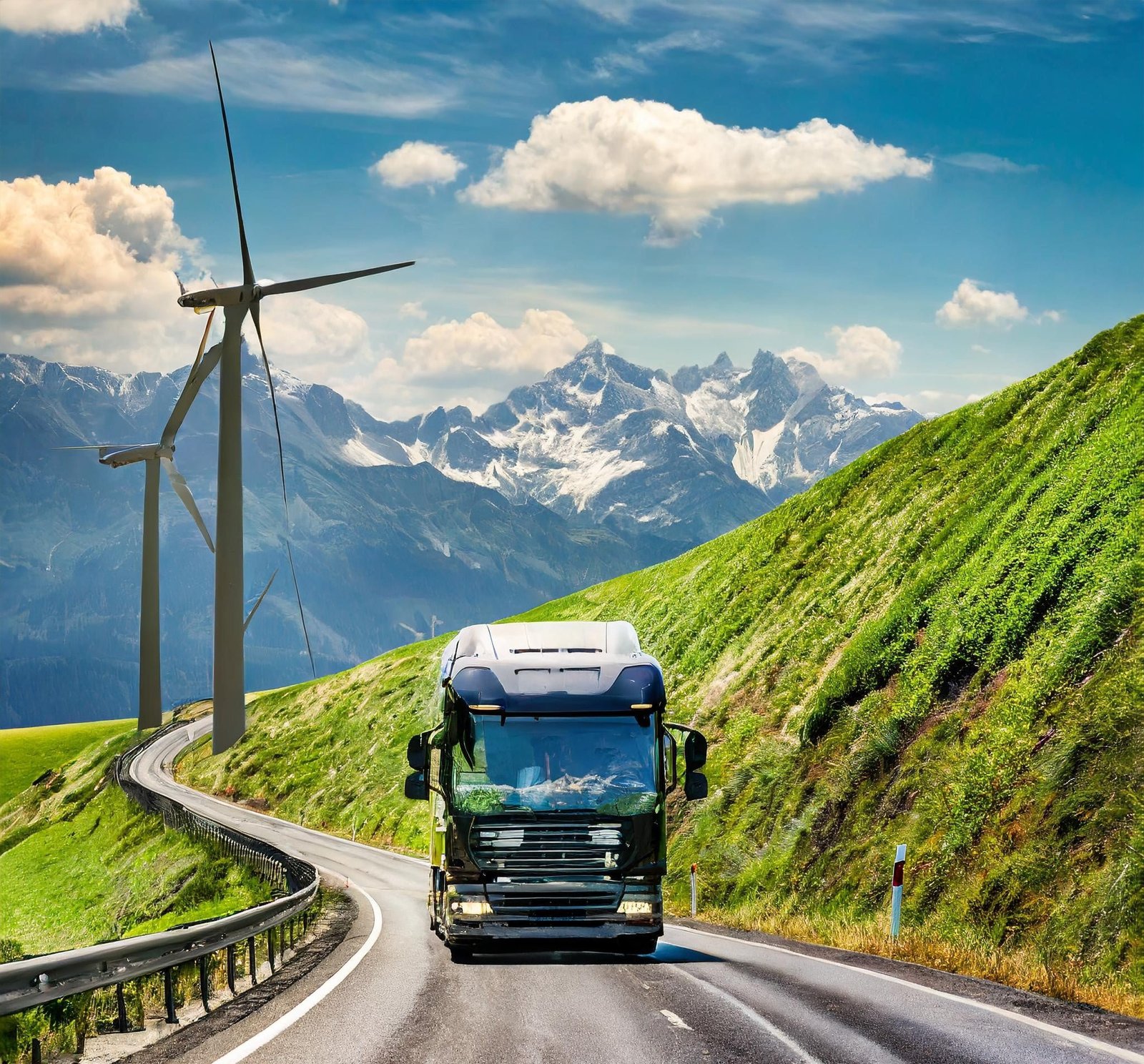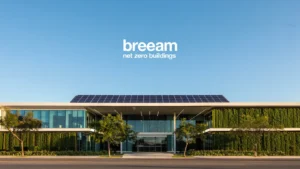In an era where the effects of climate change are increasingly felt, the imperative for sustainable practices within industries like construction and infrastructure has never been more pronounced. In the United Kingdom, where urbanization and transportation are central to economic development, the promotion of sustainable transport emerges as a cornerstone of responsible urban planning. At the forefront of this movement stands the Building Research Establishment Environmental Assessment Method (BREEAM), offering a robust framework to assess and endorse sustainable practices in the built environment. This blog delves deep into BREEAM Sustainable Transport, expanding on its significance, benefits, strategies, and future trends, with the intent of empowering UK-based businesses to embrace sustainable transportation practices and spearhead positive change in their projects.
Understanding BREEAM Sustainable Transport
Definition and Scope
BREEAM Sustainable Transport encompasses a broad array of strategies aimed at mitigating the environmental impact of transportation and promoting socially responsible mobility solutions. This assessment methodology evaluates measures to reduce carbon emissions, enhance accessibility, and encourage active travel modes like walking and cycling. By adopting a holistic approach to transportation planning, BREEAM Sustainable Transport strives to foster more sustainable and livable communities while addressing the challenges of urban mobility in the 21st century.
Key Components of Sustainable Transport Assessment
Within the BREEAM framework, Sustainable Transport assessment spans various criteria, including:
- Promoting Active Travel Options: Emphasizing the importance of walking, cycling, and other non-motorized modes of transport to reduce reliance on conventional vehicles and foster healthier, more sustainable travel habits.
- Encouraging Low-Emission Vehicles: Advocating for the adoption of low-emission and electric vehicles to curb air pollution and mitigate the environmental impact of transportation.
- Enhancing Accessibility and Connectivity: Improving access to public transit, integrating mixed land-use developments, and enhancing connectivity between different transportation modes to create more efficient and interconnected urban transportation networks.
Integration within BREEAM Certification
Sustainable Transport assessment serves as a pivotal component of the BREEAM certification process, contributing to the Environmental section of the BREEAM rating system. By implementing sustainable transport measures aligned with BREEAM criteria, businesses can earn credits that signify their commitment to sustainability and contribute to a more eco-conscious built environment. This integration underscores the importance of sustainable transportation practices in achieving broader sustainability objectives within the construction and infrastructure sectors.
Benefits of Implementing Sustainable Transport Measures
Environmental Benefits
Implementing sustainable transport measures yields a multitude of environmental benefits. By reducing reliance on fossil fuels and promoting low-emission transportation options, businesses can significantly reduce carbon emissions and mitigate air pollution. Furthermore, initiatives to promote active travel modes like walking and cycling contribute to reducing traffic congestion and enhancing overall air quality, thereby fostering healthier and more sustainable urban environments.
Economic Benefits
Beyond environmental considerations, sustainable transport measures offer compelling economic advantages. By minimizing fuel consumption, reducing vehicle maintenance costs, and improving operational efficiency, businesses can achieve substantial cost savings over the long term. Moreover, investments in sustainable transportation infrastructure and initiatives stimulate economic growth, create employment opportunities, and enhance the overall competitiveness of urban areas, fostering economic resilience and prosperity.
Social Benefits
The promotion of sustainable transport also delivers tangible social benefits. By improving access to transportation options, enhancing mobility for all segments of society, and fostering social inclusion, businesses can contribute to building more equitable and inclusive communities. Initiatives that prioritize pedestrian safety, cycling infrastructure, and public transit accessibility not only enhance the quality of life for residents but also promote social cohesion and community well-being, fostering a sense of belonging and collective responsibility.
Strategies for Achieving BREEAM Sustainable Transport Credits
Promoting Active Travel Options
One effective strategy for earning BREEAM Sustainable Transport credits involves promoting active travel options such as walking and cycling. This can be achieved through the development of pedestrian-friendly infrastructure, including sidewalks, crosswalks, and dedicated bike lanes. Additionally, businesses can implement policies and incentives to encourage employees and residents to adopt active travel habits, such as offering bike-sharing programs, providing secure bicycle storage facilities, and organizing community walking events.
Encouraging the Use of Low-Emission Vehicles
Another key strategy for achieving BREEAM Sustainable Transport credits is to encourage the use of low-emission vehicles, including electric and hybrid vehicles. Businesses can incentivize the adoption of these vehicles by installing electric vehicle charging stations, offering preferential parking for electric vehicles, and providing subsidies or tax incentives for purchasing low-emission vehicles. By promoting the transition to cleaner and more sustainable transportation options, businesses can significantly reduce emissions and improve air quality in urban areas.
Enhancing Accessibility and Connectivity
Improving accessibility and connectivity is essential for achieving BREEAM Sustainable Transport credits and fostering sustainable urban mobility. Businesses can enhance accessibility by integrating public transit infrastructure into their developments, including bus stops, train stations, and tram lines. Additionally, promoting mixed land-use developments that combine residential, commercial, and recreational facilities can reduce the need for long-distance travel and encourage walking, cycling, and public transit use. By enhancing connectivity between different transportation modes, businesses can create more seamless and efficient transportation networks that benefit both residents and visitors alike.
Challenges and Solutions
Common Challenges in Implementing Sustainable Transport Measures:
Despite the numerous benefits of sustainable transport, businesses may encounter several challenges when implementing these measures:
- Limited funding and resources for transportation infrastructure projects.
- Resistance from stakeholders, including residents and businesses, to changes in transportation policies and infrastructure.
- Technical challenges associated with implementing new technologies and infrastructure, such as electric vehicle charging stations or bike-sharing programs.
Strategies to Overcome Challenges
To overcome these challenges and successfully implement sustainable transport measures, businesses can adopt several strategies:
- Engage stakeholders early and often to build support for sustainable transport initiatives and address concerns and objections.
- Collaborate with local authorities, transportation agencies, and community organizations to secure funding and resources for transportation infrastructure projects.
- Leverage available tools and resources, such as BREEAM guidelines and best practices, to inform decision-making and implementation efforts.
Future Trends in BREEAM Sustainable Transport
Emerging Technologies and Innovations
As technology continues to evolve, we can expect to see the emergence of new technologies and innovations that will shape the future of sustainable transport. This includes advancements in electric vehicle technology, autonomous vehicles, and smart transportation systems that will revolutionize the way we travel and commute.
Anticipated Changes in BREEAM Criteria
In response to emerging trends and stakeholder feedback, we may also see changes in BREEAM criteria related to sustainable transport assessment. This could include updates to assessment methodologies, expansion of credit categories, and incorporation of new performance metrics to address emerging sustainability challenges and priorities.
In conclusion, BREEAM Sustainable Transport serves as a catalyst for driving sustainability forward within the built environment. By implementing sustainable transport measures, businesses can reduce their environmental footprint, improve air quality, and enhance the overall quality of life for residents and visitors alike. Through a combination of strategies such as promoting active travel options, encouraging the use of low-emission vehicles, and enhancing accessibility and connectivity, businesses can achieve BREEAM certification and pave the way towards a more sustainable future for the UK.
Are you ready to lead the charge towards sustainability in your projects?
Take the first step by exploring BREEAM Sustainable Transport and its transformative potential for your business. Contact our team of sustainability experts today to learn more about how you can integrate sustainable transport measures into your projects, achieve BREEAM certification, and make a meaningful impact on the environment and society. Together, let’s drive sustainability forward and create a brighter future for generations to come.



